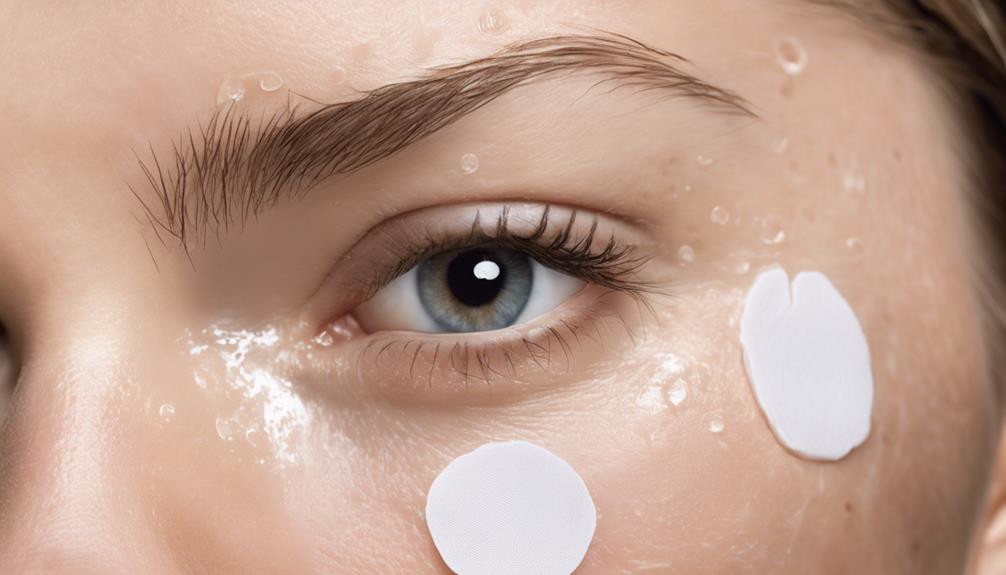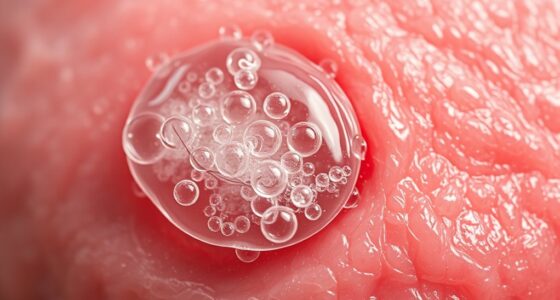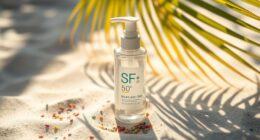Pimple patches aren’t effective on unpopped pimples like nodules and cysts. These deep, painful blemishes need different treatments since patches primarily work on surface acne. Their ingredients can irritate sensitive skin, making them not ideal for deeper lesions. If you’re struggling with unpopped pimples, consider other approaches like dermatologist consultations. Want to learn more about treating unpopped pimples and the limitations of pimple patches? There’s plenty to explore on the topic ahead!
Key Takeaways
- Pimple patches are most effective on open or early-stage pimples, not on deeper unpopped ones like nodules or cysts.
- Hydrocolloid patches can help create a healing environment but may not penetrate deeply enough for cystic acne.
- Microneedling patches may offer some benefit for deeper blemishes by targeting underground acne more effectively.
- Salicylic acid patches can help unclog pores on early-stage pimples, but are less effective on fully unpopped ones.
- Persistent or severe breakouts should be evaluated by a dermatologist, as patches do not address underlying causes.
Understanding Unpopped Pimples and Their Characteristics

Unpopped pimples can be frustrating and painful, often leaving you wondering why they won’t go away. They come in various forms, including nodules, cysts, papules, whiteheads, and blackheads.
Nodules and cysts are particularly troublesome, sitting deep within your skin, filled with trapped bacteria and pus, making them impossible to pop. They typically cause painful inflammation, redness, and swelling, and they can lead to scarring if you try to tamper with them. Pimple patches are not effective for cystic acne, which is often what unpopped pimples represent.
Hormonal changes, genetics, and poor skincare habits often contribute to their formation. To manage these stubborn pimples, avoid popping them.
Instead, consider applying cold compresses for relief, using non-comedogenic products, and consulting a dermatologist for professional advice and treatment options.
How Pimple Patches Function on Different Types of Acne
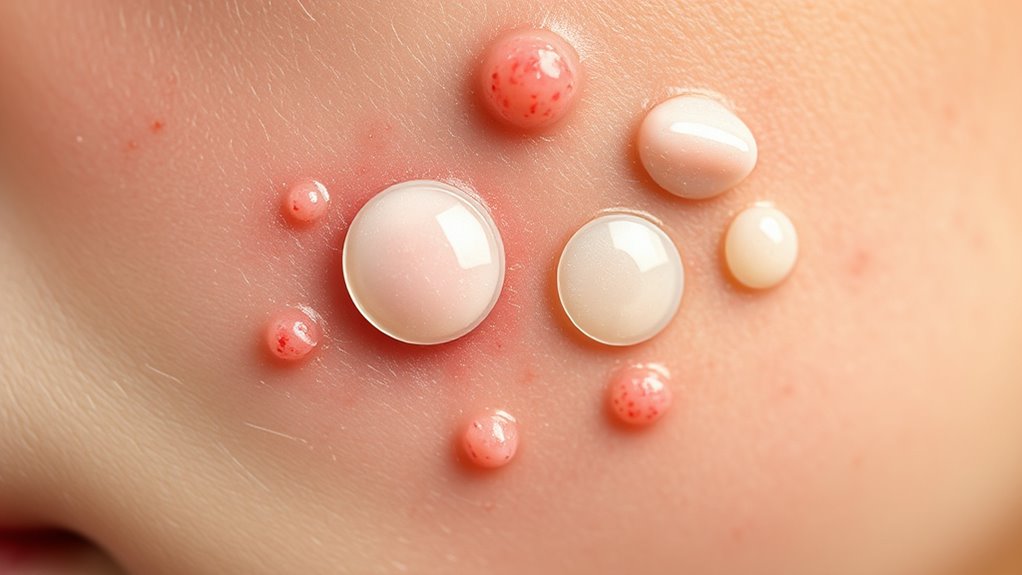
When dealing with various types of acne, understanding how pimple patches function can help you choose the right treatment for your skin.
For surface-level acne, these patches reduce inflammation and absorb pus, flattening pimples while creating a protective barrier to prevent picking. They work similarly on open pimples, promoting healing and reducing infection risk. However, if you’re facing cystic acne, standard patches won’t be effective due to their deeper nature. Instead, microneedling patches may offer some benefit, but professional treatment is often necessary. Pimple patches are designed for targeted treatment of breakouts, making them a convenient option for occasional acne flare-ups. Regardless of your skin type, be cautious of potential irritation from ingredients and adhesives.
Types of Pimple Patches Suitable for Unpopped Pimples
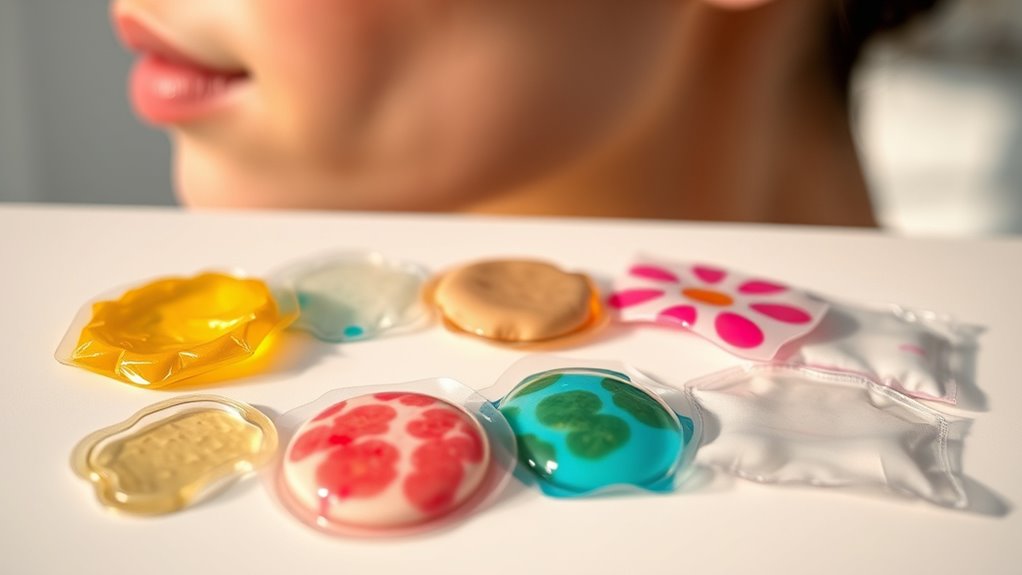
If you’re struggling with unpopped pimples, choosing the right type of pimple patch can make a significant difference in your treatment.
Hydrocolloid patches are a great option as they can draw out impurities, even if your pimple hasn’t surfaced yet. These patches create a moist environment that promotes healing by absorbing fluid from the pimple.
Salicylic acid patches work well on early-stage pimples, helping to unclog pores.
Microcrystal patches are designed specifically for targeting underground blemishes, making them another good choice.
For daytime wear, hydrocolloid invisible spot control patches can help manage active pimples discreetly.
While tea tree oil patches may offer some antibacterial benefits, they aren’t always ideal for unpopped pimples.
Keep these options in mind to enhance your acne treatment routine effectively.
Key Ingredients That Target Unpopped Pimples
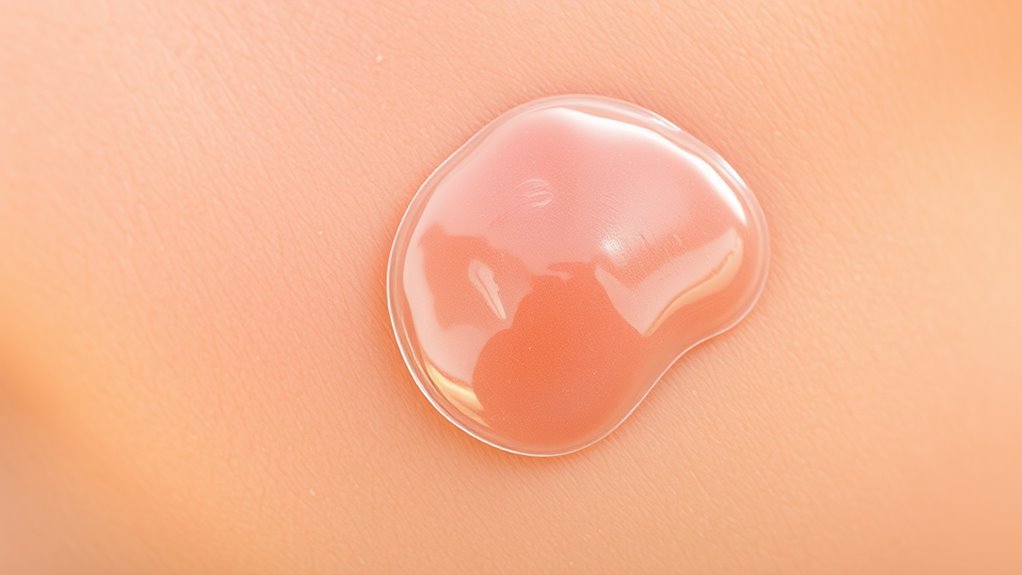
Dealing with unpopped pimples can be frustrating, but understanding the key ingredients that target them can help you find effective solutions.
Salicylic acid is a go-to for reducing inflammation and unclogging pores, making it ideal for surface-level pimples. Additionally, not everyone with occasional pimples has acne-prone skin, highlighting the importance of personalized skincare.
Salicylic acid effectively reduces inflammation and unclogs pores, making it perfect for tackling surface-level pimples.
Tea tree oil offers antibacterial benefits, combating acne-causing bacteria while soothing inflammation.
Niacinamide enhances your skin’s barrier and adds moisture, which can calm unpopped pimples.
For deeper issues, hyaluronic acid hydrates and soothes, especially in microneedle patches.
Hydrocolloid provides a moist environment that absorbs excess fluid, promoting healing.
Benefits of Using Pimple Patches for Unpopped Pimples
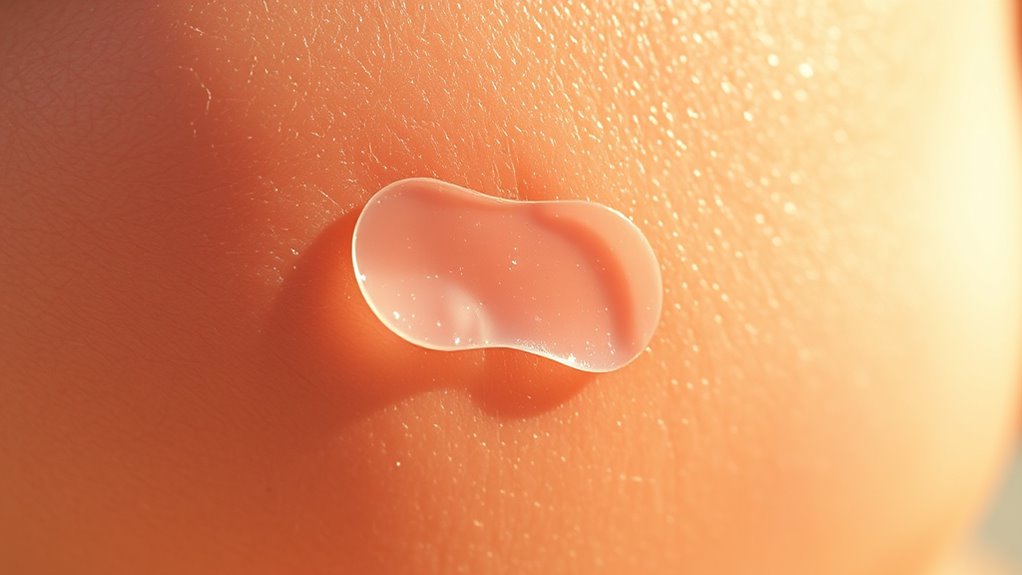
While unpopped pimples can be a nuisance, using pimple patches offers a range of benefits that can help you manage them effectively.
Pimple patches act as a barrier against dirt and bacteria, preventing further irritation and inflammation. By covering the pimple, they deter you from picking or popping it, reducing the risk of infection or scarring.
Many patches contain soothing ingredients like salicylic acid, which minimizes redness and swelling. They create a moist environment that promotes healing, speeding up recovery time. Additionally, hydrocolloid patches are known to absorb fluid and pus, further aiding in reducing inflammation. These patches are often recommended by dermatologists for localized treatment of acne, enhancing their effectiveness.
Plus, their discreet design allows you to wear them under makeup, making them convenient for daily use.
Ultimately, pimple patches provide both physical protection and psychological support, helping you feel more confident while managing breakouts.
Limitations of Pimple Patches on Unpopped Pimples
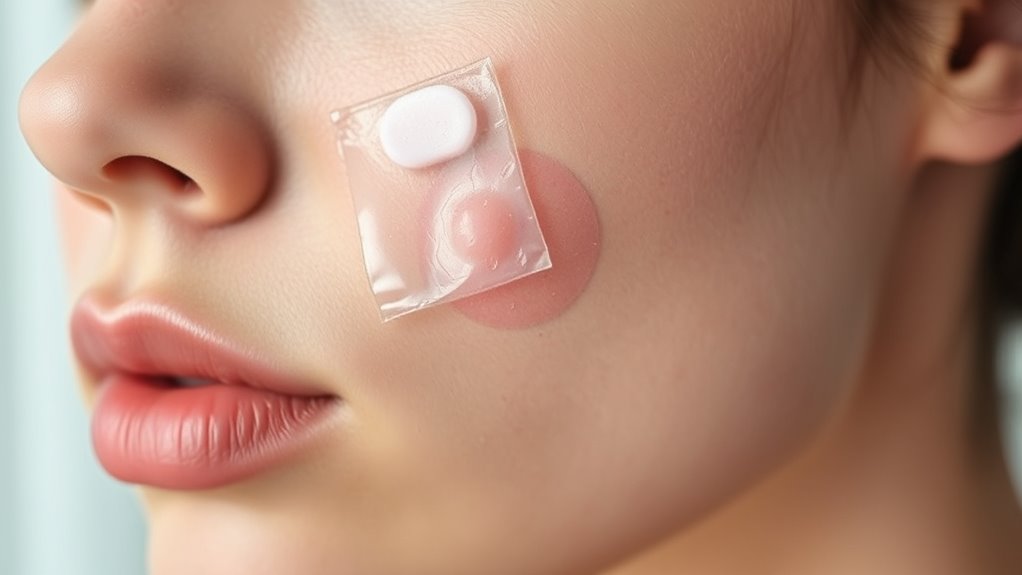
Pimple patches can be a helpful tool for managing breakouts, but they do have limitations, especially when it comes to unpopped pimples. These patches work best on open or early-stage pimples and often struggle with deeper, closed lesions. While some contain active ingredients like salicylic acid, they may irritate sensitive skin. Pimple patches absorb pus, oil, and impurities from pimples, creating a healing environment, but they don’t address underlying acne causes, such as hormonal issues, and their effectiveness varies depending on your skin type. For cystic acne or blackheads, patches typically aren’t effective, as they can’t penetrate deeply enough. If you’re dealing with persistent or severe breakouts, consulting a dermatologist for targeted treatments might be a better option than relying solely on pimple patches.
Safety Tips for Using Pimple Patches Effectively
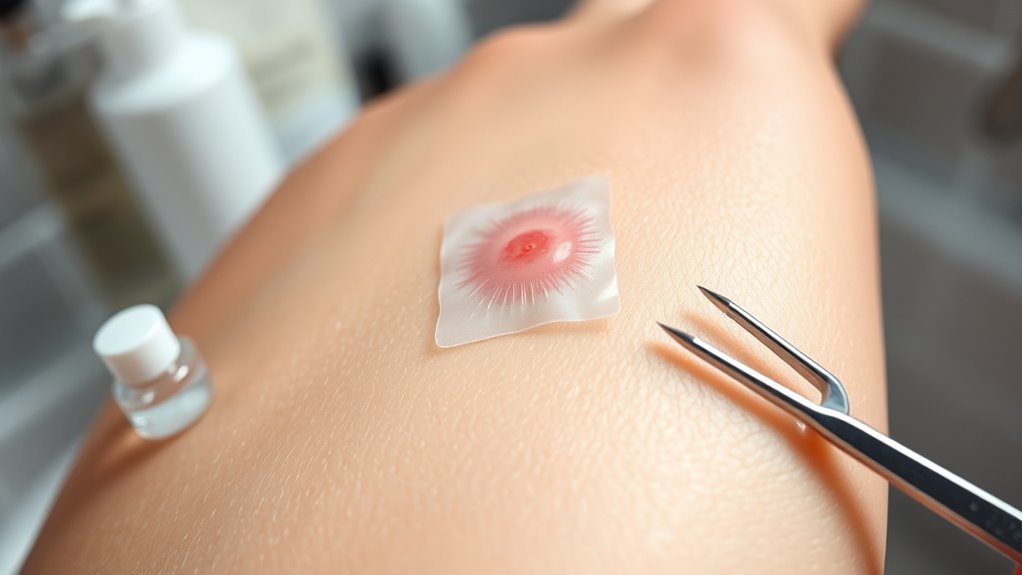
When applying pimple patches, it’s crucial to follow proper safety tips to maximize their effectiveness. Start by cleansing your skin thoroughly to remove dirt and oil, then pat it dry for better adhesion.
Cleansing your skin before applying pimple patches ensures better adhesion and maximizes their effectiveness.
Choose a patch size that covers the entire pimple and a bit of the surrounding area. Press it gently for a few seconds to secure it in place, ensuring no wrinkles or air bubbles form.
Always avoid applying patches on open wounds or freshly popped pimples to prevent irritation and infection. If you have sensitive skin, opt for hypoallergenic patches.
Hydrocolloid patches absorb excess fluid from pimples, which can aid in faster healing and enhance the effectiveness of the treatment.
Stick to the recommended wear time, and never reuse patches to avoid bacterial buildup. Integrating patches into your skincare routine can enhance overall results.
Frequently Asked Questions
Can Pimple Patches Be Used Overnight?
Yes, you can use pimple patches overnight. They’re designed to stick well, allowing you to treat blemishes while you sleep.
Applying them for 8-12 hours provides ample time for the patches to absorb impurities and reduce inflammation. Just make sure your skin is clean and dry before applying.
If the patches become saturated, replace them to maintain effectiveness. They’re a convenient way to manage acne without disrupting your nighttime routine.
How Often Should I Replace Pimple Patches?
Think of pimple patches as tiny shields protecting your skin.
You should replace them when they become opaque or white, indicating saturation. If the adhesive starts peeling or you notice irritation, it’s time for a new patch.
Generally, you can wear them for 4-8 hours, or up to 24 if tolerated.
Just remember to keep an eye on your skin’s response to guarantee effective treatment and avoid irritation.
Are Pimple Patches Suitable for Sensitive Skin?
Pimple patches can be suitable for your sensitive skin, especially if you choose hydrocolloid patches. They gently absorb fluid and protect your skin.
However, be cautious with ingredients like salicylic acid and tea tree oil, as they might irritate you. Always look for patches specifically designed for sensitive skin and apply them carefully to avoid further irritation.
If you experience redness or discomfort, consider consulting a dermatologist for personalized advice.
Can I Use Makeup Over Pimple Patches?
Absolutely, you can use makeup over pimple patches!
Imagine your pimple patch as a superhero cape, shielding your pimple from irritation while you’re busy conquering the day.
Just make sure your skin’s clean and dry before applying the patch.
Use a gentle touch with your makeup to keep that superhero shield intact, and go for matte concealers to blend seamlessly.
With this combo, you’ll look flawless while your pimple gets the healing it needs!
Do Pimple Patches Expire?
Yes, pimple patches can expire, especially those with active ingredients.
While hydrocolloid patches generally don’t have a strict expiration, it’s best to use them within three to five years for ideal results.
Always check the packaging for expiration dates on patches with active ingredients like salicylic acid.
Using expired patches might lead to reduced effectiveness or skin irritation, so store them properly in a cool, dry place to maximize their shelf life.
Conclusion
To sum up, while pimple patches can be effective for unpopped pimples, they’re not a miracle cure. Think of them as your trusty sidekick in the battle against acne—they help reduce inflammation and promote healing, but they won’t work magic overnight. Remember to choose the right type and ingredients for your skin’s needs. So, arm yourself with knowledge and confidence, and let those patches do their thing while you tackle your day like a modern-day warrior!



